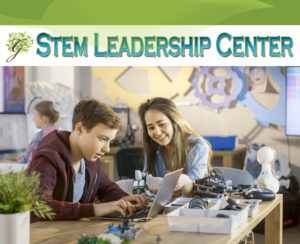
Here’s a challenge to parents… How often in a school day is your child disengaged from learning?
PBS NewsHour ran a special on the Rocketship charter school network. They highlighted some of the spectacular elements of this ingenious charter school and pointed out some of its flaws. A section of the broadcast focused on their Learning Labs. The labs, despite bright colors, look like a call center with everyone facing into their own cubicles working on computer programs that accelerate at a personalized pace. Merrow says “A problem we saw is that some students do not appear to be engaged. They sit at their computers for long periods of time seemingly just guessing.” While I am not for disengagement, I am stymied by what appears to be a myth that students in front of a teacher are 100% engaged.
Isn’t much of a school day (the work day, even a vacation day) a stage for disengagement? Even with the most dynamic teacher and classmates, a student can become disengaged. They could be hungry, tired, worried about a situation at home, completely preoccupied with the scent of a girlfriend’s perfume that lingers on his sweatshirt she wore the night before, or bored with curriculum that they already know or don’t have a clue about.
My son’s cyber school calls me his “learning coach.” I recently watched as he played the recording of his calculus teacher reviewing some homework. He marked some of his problems wrong and moved on to listening to a recording of her presenting the next lesson (He had missed the live lesson to attend a CyberPatriot’s competition). I asked him to hit pause and show me why he got some wrong. He walked me through, “I solved for the wrong variable,” was one answer. When I asked, “How can you prevent that mistake in the future?” There was a lot of back and forth to come up with strategy. He resists the strategies that are not universal and there a struggle to recall some core math practices that are focused on problem solving and not just on that particular problem set. I caught him in a moment he was open to learning. I caught him in a moment in the middle of a class that could be paused. I have enough of a math background to know to reinforce the type of dialog that should be going on in his head, but isn’t yet. A computer, so far, can’t do that. Any teacher with a large group is only going to reach some of the students in the classroom. Had his teacher engaged in the same conversation with him in the live lesson, all the rest of her students would have been distracted. These moments of full engagement are rare, they are more often in a small group or one on one setting, and depend a great deal on the energy and state of mind of the learner.
My daughter echoed that it was in doing homework with a friend or sitting with a tutor of small group that she reached the insights and into math and science that stayed with her after the test. Learning is filled with these one on one interactions that produce an internal aha moment in the mind of the learner. It can happen with a computer game, or in a classroom, or with an online teacher, or with a parent helping with homework review. But these moments don’t happen every moment of a school day. They are counterbalanced with moments of boredom and distraction.
Dan Meyer, a fantastic blogger and Pied Piper for Math Education Reform, also took a look at the NewsHour report on the Rocketship schools. He comments, “The math program, ST Math, isn’t bad but computers constrain the universe of math questions you can ask down to those which can be answered with a click and graded by a computer. The promise of personalization, of perfectly differentiated education, has forced Rocketship to make dramatic concessions on the quality of that education. It’s a buffet line where everyone chooses their own flavor of the same gruel.” Dan is one of the leading voices to reconstructing math curriculum that “engages” students. I agree with him that multiple choice math cuts off the major thruway of mathematics learning. Yet I disagree it is the attempt to develop computerized learning augmented by a master teacher that fails the student. The problem on one side is educational (computer programs and / or teachers that do not place learning engagement first). The problem on the other side is also how to tap the intrinsic motivation of a child or a teenager to sift through their own distractions and focus. In other words, it’s a two way street. Education needs to have the elements of engagement and students need to know how to pay attention and engage.
Are you a (grand) parent struggling with these questions? Check out the free All Kinds of Minds toolkit. Start to become better informed about the new science arising from brain scans and neuro psych testing into how our brains focus. While we raise the bar and strive for improvement in education, our children will never have only perfect teachers, only perfect curriculum. They will always have themselves. When a moment set aside for education becomes filled with a distraction, they can study themselves – the most fascinating curriculum out there.



